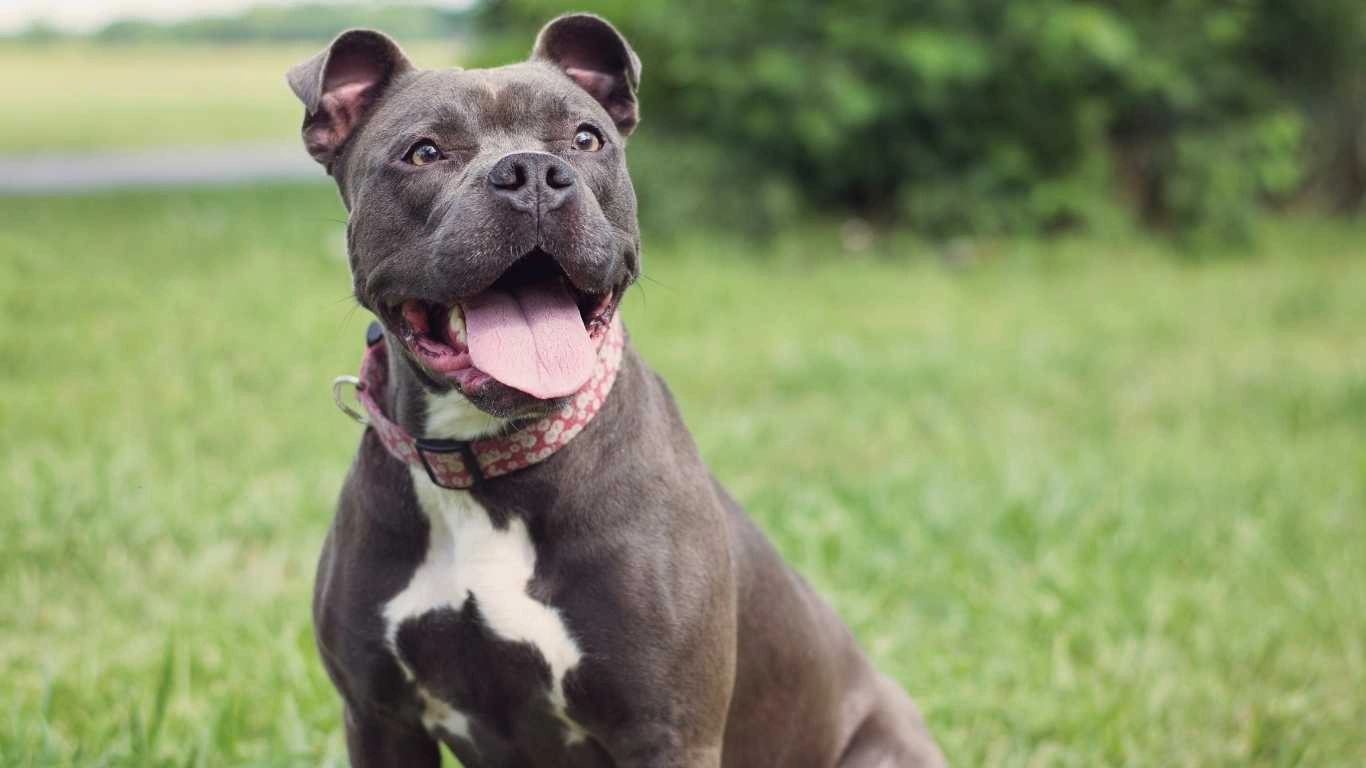How to Create a Powerful High-Calcium Diet for Dogs Naturally
If you’ve ever found yourself Googling how to create a high-calcium diet for dogs, you’re not alone. Back when I worked full-time as an Animal Care Specialist at a shelter, I saw so many pups come in with bone issues, dental problems, and brittle coats—all signs of calcium imbalance. It’s wild how easily this vital nutrient gets overlooked. Whether you’re a new dog parent or a seasoned pet lover, making sure your furry friend gets enough calcium isn’t just about throwing them a bone. It’s about building a solid nutritional foundation, and trust me, your dog will thank you—probably with a tail wag and a happy zoomie.
Why Calcium Matters So Much for Your Dog’s Health

Calcium plays a *huge* role in your dog’s body. It’s not just about bones—though yeah, that’s the biggie—it also keeps muscles working right, supports a strong heartbeat, and helps with nerve function. Back at the clinic, I once helped care for a sweet Labrador with muscle tremors and low energy. The root issue? A poorly balanced diet with barely any calcium. The transformation once we corrected it was *amazing*.
Signs Your Dog May Be Lacking Calcium
Not every deficiency screams for attention, but there are clues. Here are a few signs your dog might be running low on calcium:
- Stiff or wobbly movements
- Muscle twitching or tremors
- Weakness or lethargy
- Loss of appetite
- Dental issues (like cracked teeth or gum inflammation)
But—*and this is important*—don’t go overboard and start supplementing without proper research or vet advice. Too much calcium can be just as risky, especially for large-breed puppies. That’s why understanding how to build a balanced high-calcium diet is key.
Understanding Natural Calcium Sources for Dogs

One thing I learned early on in the field: natural sources always win. Whole, species-appropriate foods offer not just calcium but the right co-factors—like phosphorus and magnesium—to help your dog actually use that calcium.
Top Natural Calcium Boosters
- Raw Meaty Bones: These are a goldmine of calcium and phosphorus. Think chicken wings, turkey necks, or beef ribs. Just make sure they’re raw and size-appropriate to avoid choking hazards.
- Eggshell Powder: Sounds weird, but finely ground eggshells are loaded with bioavailable calcium. I used to save eggshells from home, dry them out, and grind them into powder—it’s so easy.
- Bone Broth: Not super high in calcium, but when slow-cooked with vinegar, it leaches minerals like calcium and glucosamine, making it a tasty and functional meal topper.
- Dark Leafy Greens: Kale, broccoli, and collard greens actually contain usable calcium too. Not every dog loves their veggies, but a quick steam and blend into meals can help.
One of the dogs I cared for—Buddy, a senior Beagle with brittle bones—absolutely loved his spinach and bone broth mix. We made it a lunchtime ritual. Within months, his coat improved, and he started getting up the shelter stairs with ease again.
Should You Use Calcium Supplements?

Supplements are tempting, I know. Especially when you’re worried about your dog not getting enough from food. But honestly, most healthy adult dogs eating a complete diet don’t need extra calcium unless recommended by a vet. Over-supplementation can lead to kidney stones, skeletal problems, or worse. I’ve seen pet parents unintentionally cause more harm than good with those chewable calcium tablets.
When Supplements Might Make Sense
- If your dog eats a homemade or raw diet without proper balance
- Pregnant or lactating dogs needing a boost
- Puppies on a non-commercial diet
- Seniors with bone loss or muscle atrophy (under vet supervision)
If you’re leaning toward a supplement, go for one with a proper calcium-to-phosphorus ratio (ideally around 1.2:1), and always run it by your vet first. Seriously, a quick consult can save you a lot of stress—and your pup a lot of discomfort.
Balancing the Diet Beyond Just Calcium
Creating a truly healthy meal plan means more than just adding calcium-rich foods. When I helped our shelter design new feeding protocols, we looked at the big picture: calcium, phosphorus, magnesium, vitamin D—it all works together. Without vitamin D, for example, dogs can’t absorb calcium effectively. And without the right ratio of phosphorus, calcium can actually cause skeletal issues. It’s a dance of nutrients, and balance is the choreography.
Meal Planning Tips: Putting Together a High-Calcium Diet for Dogs

Alright, so now that we know the *what* and the *why*, let’s talk about the *how*. Building a high-calcium diet for dogs doesn’t mean reinventing the wheel. Honestly, back in my shelter days, we kept things simple but consistent. The key? Mixing calcium-rich foods with ingredients that support absorption, while still keeping your dog’s taste buds excited.
If you’re feeding commercial food, it’s pretty straightforward—just double-check that the brand meets AAFCO standards for your dog’s life stage. For homemade feeders (and I’ve met many passionate DIY dog parents!), things get a bit more hands-on. But it’s totally doable and honestly kind of fun once you get the hang of it.
Basic Meal Plan Example (For a 50 lb Adult Dog)
Here’s a general outline I used as a starting point when working with pet parents one-on-one:
- 40% lean animal protein – Chicken, beef, turkey, or lamb
- 10% raw meaty bones – Chicken wings, turkey necks, etc.
- 10% organ meats – Liver, kidney (just don’t overdo it)
- 30% cooked vegetables – Kale, spinach, carrots, green beans
- 10% extras – Eggshell powder, omega oils, kelp, or bone broth
Of course, every dog is unique. Age, breed, activity level, and health status all play a role. I always recommended running your plan by a holistic vet or a canine nutritionist—especially when calcium is a concern.
How to Measure Calcium Properly in Homemade Diets

Okay, let’s get a little nerdy for a sec (but in a cool way). To truly nail down a high-calcium diet for dogs, you need to know the numbers. Calcium requirements are usually measured in mg per kcal of food, and the general guideline is around 1 gram of calcium per 1,000 kcal for adult dogs. Puppies and lactating females need more—but again, don’t guess. Always calculate.
Tools You Can Use
Some of my favorite tools when planning meals included:
- Pet Diet Designer – Great for mapping out DIY meals with real nutritional breakdowns.
- USDA Nutrient Database – Super handy for looking up the calcium content of raw ingredients.
- Digital kitchen scale – Essential. Eyeballing doesn’t cut it when balance matters.
One of my long-time clients had a Husky with arthritis. After we balanced her meals (including calcium and vitamin D from sardines), her limp noticeably improved. That kind of feedback makes all the planning and math 100% worth it.
High-Calcium Treats & Toppers That Dogs Actually Love

If your dog is picky or you just want to sneak in more nutrients without a full diet overhaul, treats and toppers are your best friends. I used to prep a weekly batch of homemade biscuits for our clinic dogs—nothing fancy, just real ingredients with a calcium boost.
DIY High-Calcium Dog Treat Ideas
- Eggshell Banana Bites: Mash 1 ripe banana with 1/2 tsp eggshell powder and 1 tbsp oat flour. Roll into tiny balls and freeze.
- Sardine Cookies: Mix mashed sardines, one egg, and a bit of oat flour. Bake at 350°F for 15-20 mins. Dogs go nuts for them!
- Yogurt Bone Broth Cubes: Mix plain Greek yogurt with bone broth and freeze in bone-shaped molds. Great for hot days and hydration, with a bit of calcium from the dairy.
Of course, moderation is key. Treats shouldn’t make up more than 10% of your dog’s daily intake, no matter how healthy they are. But using them wisely can definitely help balance a meal, especially if your dog isn’t getting enough calcium from their regular chow.
What to Watch Out for: When Too Much Calcium Becomes a Problem
This part’s important, and I’ve seen it firsthand more than once. You’d think more calcium = stronger bones, right? Not always. In fact, too much—especially when it’s not properly balanced with phosphorus—can lead to skeletal deformities, kidney stress, and even heart issues in dogs. I remember one Doberman pup who came in with severe joint pain. The breeder had been adding extra calcium to “strengthen his frame.” Instead, the poor thing developed painful growth plate issues. Lesson learned the hard way.
Symptoms of Excess Calcium (Hypercalcemia) in Dogs
- Frequent urination and thirst
- Loss of appetite
- Vomiting or constipation
- Lethargy and muscle weakness
- Calcium deposits in soft tissues (advanced cases)
If you ever notice these symptoms, don’t wait—get your dog checked. A quick blood test can reveal a lot. And remember, it’s all about balance. You want to *support* their system, not overload it.
Feeding Puppies and Seniors: Special Calcium Considerations

When it comes to crafting a high-calcium diet for dogs, it’s crucial to recognize that not all dogs have the same nutritional needs. Puppies and senior dogs, in particular, require special attention to ensure their calcium intake supports their unique life stages.
Calcium Needs for Puppies
During my time at the shelter, I observed that puppies, especially those of large breeds, are highly sensitive to calcium levels. Their growing bones need adequate calcium, but too much can lead to developmental issues. According to the Association of American Feed Control Officials (AAFCO), the recommended calcium content for puppy diets ranges from 1.2% to 1.8% on a dry matter basis, with a calcium-to-phosphorus ratio between 1:1 and 2:1 [AAFCO Nutrient Profiles].
For large breed puppies, maintaining the correct balance is even more critical. Excessive calcium can lead to skeletal abnormalities. I recall a case where a Great Dane puppy was fed a diet too high in calcium, resulting in joint issues that required medical intervention. It’s always best to consult with a veterinarian to tailor the diet appropriately.
Calcium Considerations for Senior Dogs
Senior dogs often face challenges like decreased bone density and joint problems. Ensuring they receive enough calcium, along with vitamin D and phosphorus, can help maintain their bone health. However, it’s essential to avoid over-supplementation, which can lead to kidney issues. Regular veterinary check-ups and blood tests can help monitor their mineral levels and adjust their diet as needed.
Monitoring and Adjusting Your Dog’s Calcium Intake

Creating a balanced diet is not a one-time task. It’s an ongoing process that requires monitoring and adjustments based on your dog’s health status, activity level, and life stage.
Regular Health Check-Ups
Regular veterinary visits are essential to assess your dog’s overall health and nutritional status. Blood tests can reveal calcium levels and help detect any imbalances early. I always encouraged pet owners to keep a log of their dog’s diet and any supplements to discuss during vet visits.
Observing Physical Signs
Be attentive to signs that may indicate calcium imbalance. Symptoms of deficiency include muscle tremors, lethargy, and poor coat condition, while excess calcium can lead to constipation, urinary issues, and decreased appetite. If you notice any of these signs, consult your veterinarian promptly.
Utilizing Nutritional Tools
Tools like Pet Diet Designer can assist in formulating balanced homemade diets. These platforms allow you to input your dog’s specific details and create meal plans that meet their nutritional requirements.
References
- AAFCO Dog Food Nutrient Profiles
- USDA FoodData Central
- Pet Diet Designer
- Merck Veterinary Manual: Nutritional Requirements of Small Animals
Disclaimer
This article is intended for informational purposes only and does not substitute professional veterinary advice. Always consult with a qualified veterinarian before making changes to your dog’s diet, especially concerning calcium supplementation and dietary adjustments for specific life stages or health conditions.






